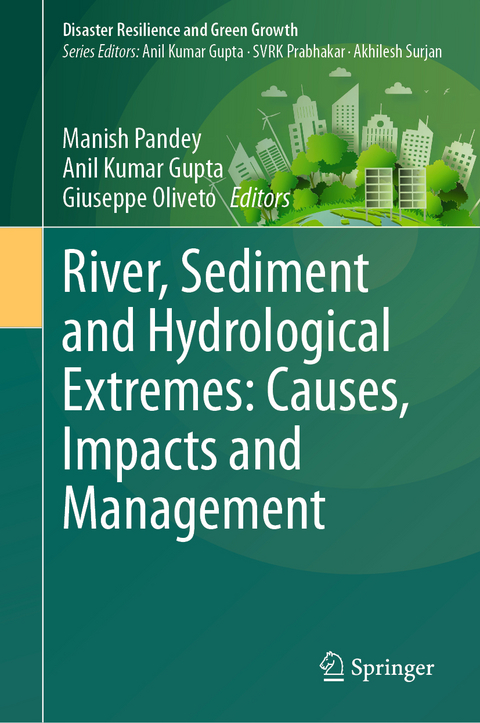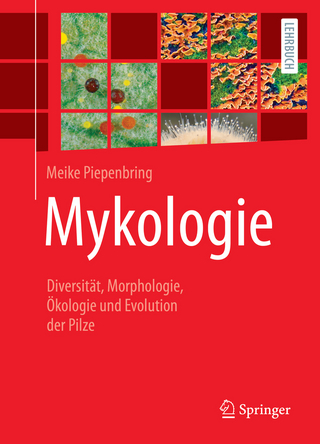
River, Sediment and Hydrological Extremes: Causes, Impacts and Management
Springer Verlag, Singapore
978-981-99-4810-9 (ISBN)
lt;p>This edited book provides a platform for knowledge sharing in all areas related to the rivers, sediment and hydrological extremes. It explains the hypothesis that river flow and sediment transport are intimately linked to erosion, scour and sediment deposition. Sediment transport, erosion and deposition are driven by local base-level changes and are highly variable in space and time. These concepts have serious implication for understanding the recent development of the River, Sediment and Hydrological Extremes.
The natural hazards posed by hydrologic events and river systems depend on the uncertainty of hydrological events. This ability is affected by change in climatic conditions. Climate change studies have revealed that the frequency of extreme weather phenomena with increasing damage to human assets has gradually grown worldwide. As a consequence, rainfall events concentrated in time and space are expected to lead to serious local flooding and sediment transport in many parts of the world. Floods are remarkable hydro-meteorological phenomena and forceful agents of geomorphic evolution in most physical geographical belts and, from the viewpoint of human society, among the most important environmental hazards. According to the Indian Environment Agency, floods rank as number one on the list of natural disasters in India over the past decade.
This book is an attempt to fill the gap in literature and bring forth evidence based latest research about precise estimation of erosion and scour, which is essential to reduce the hazards. The book explains that lack of preparedness and appropriate adaptation strategy makes people more risk-prone. It highlights the vulnerability in South Asia region about the impacts of flood, sediments, and river hazards because a large portion of its population depends on sensitive sectors like agriculture and forestry for livelihoods and several other reasons.
The book is relevant for academician, researchers and students of disaster management, hydrology and ecology.
Dr Manish Pandey graduated in Civil Engineering from Uttarakhand Technical University, India. He completed his masters and doctorate from Indian Institute of Technology Roorkee, India. Presently, Dr Pandey is Assistant Professor at NIT Warangal since 2019. He has more than 5 years teaching and research experience in experimental hydraulics and water resources engineering. He has authored more than 40 peer-reviewed journal papers and 20+ book chapters and conference proceeding papers. He has guided 1 PhD and 5 M.Tech students. Presently he is guiding 4 PhD and 5 M.Tech students. He was also awarded MOST postdoctoral research grant in year 2018. He is an editorial board member of various national and international journals. Dr. Pandey is an active reviewer in several reputed peer-reviewed journals. Prof. Anil Kumar Gupta is a sustainability risk management strategist working in the area of disaster management, environment and climate resilience for more than25 years with national, sub-national and business administrations. He is currently a full Professor and Head of India’s National Institute of Disaster Management (NIDM) Division of Environment and Disaster Risk Management. He is Programme Director of the Centre for Excellence on Climate Resilience and implementing projects, viz. CAP-RES (with DST, under National Knowledge Mission on Climate Change), National Agriculture Disaster Management Plan (with Ministry of Agriculture & Farmer’s Welfare). He was a recipient of Excellence Award by the Society of Environmental & Occupational Health, and bestowed with IDRC Canada’s Think Tank Initiative Senior Fellowship 2011 for policy research. Prof. Giuseppe Oliveto is Associate Professor of Hydraulic Engineering at the School of Engineering of University of Basilicata (Italy). Since 1992 he has been carrying out theoretical and experimental studies encompassing: evolution and patterns of river networks, fluvial hydraulics, sediment transport, bridge hydraulics, and urban drainage hydraulics. He is author of more than 100 papers in scientific journals and conference proceedings. He is an editorial board member of various national and international journals. He was recognized as outstanding reviewer by international journals. He has been awarded the Robert Alfred Carr Prize by the Council of the Institution of Civil Engineers (ICE) - London (UK) for the paper "Temporal scour evolution at non-uniform bridge piers" published in the Proceedings of the Institution of Civil Engineers - Water Management, Volume 170, October 2017.
lt;p>Part 1. Introduction and Overview.- 1. Flood Modelling using MIF method with GIS techniques: a case study of Iril River catchment, Manipur, India.- 2. A case study on estimating the ecosystem service values (ESVS) under anthropogenic influences for Chennai and Hyderabad.- 3. Groundwater vulnerability mapping using modified drastic model: a GIS based case study of Imphal east district, Manipur, India.- 4. Flood hazard mapping using hydraulic models and GIS: a review.- 5. A case study on prediction of heatwave days using machine learning algorithms over Telangana.- 6. Quantifying the reliability of reanalysis precipitation products across India.- 7. Weakly nonlinear waves in non-ideal fluids.- 8. Spatial and temporal variability of soil moisture, its measurement and methods for analysis: a review.- Part 2. Causes and Impacts.- 9. Streamflow estimation using entropy-based flow routing technique in Brahmani river, Odisha.- 10. Infiltration of suspended fine sediments into surface layer of coarse sediment-bedded channel.- 11. River water flow prediction rate based on machine learning algorithms: a case study of Dez river, Iran.- 12. A case study in evaluating spatio-temporal variations in drought and its risk assessment over Telangana using satellite data.- 13. Drought modeling through drought indices in GIS environment: a case study of Thoubal district, Manipur, India.- 14. Copula based probabilistic evaluation of meteorological drought characteristics over India.- 15. Nonstationary flood frequency analysis: review of methods and models.- 16. Multi-day Extreme Precipitation Ranking and Association with Atmospheric Moisture Transport during Indian Summer Monsoon.- Part 3. River Restoration, Hydraulic Structure Stability and Flood Risk Management.- 17. Remote sensing and its application on soil and ecosystem services.- 18. Sustainable land and water management in urban areas: Emerging challenges.- 19. Nature of Bursting Events Over a Rigid Bed with Emergent Vegetation.- 20. Recirculation region control behind a partially submerged cylinder due to wave against current.- 21. Assessment of sedimentation in Kaliasote reservoir, Bhopal using satellite remote sensing techniques.- 22. Development of River Atlas using space and ground based inputs for Brahmaputra and Barak valleys in Assam, India.- 23. Numerical study of flow through Linear Weir.- 24. Artificial Intelligence Based Fully Scalable Realtime Early Flood Warning System.- 25. Sustainability through Integrated Resilience and Risk Management: Rivers and Disasters in Changing Climate.
| Erscheinungsdatum | 18.10.2023 |
|---|---|
| Reihe/Serie | Disaster Resilience and Green Growth |
| Zusatzinfo | 1 Illustrations, black and white; XIX, 434 p. 1 illus. |
| Verlagsort | Singapore |
| Sprache | englisch |
| Maße | 155 x 235 mm |
| Themenwelt | Naturwissenschaften ► Biologie ► Botanik |
| Naturwissenschaften ► Biologie ► Ökologie / Naturschutz | |
| Naturwissenschaften ► Geowissenschaften ► Geografie / Kartografie | |
| Naturwissenschaften ► Geowissenschaften ► Hydrologie / Ozeanografie | |
| Schlagworte | disaster management • Flood Risk Management • Hydrological Extremes • River extremes • river restoration |
| ISBN-10 | 981-99-4810-X / 981994810X |
| ISBN-13 | 978-981-99-4810-9 / 9789819948109 |
| Zustand | Neuware |
| Informationen gemäß Produktsicherheitsverordnung (GPSR) | |
| Haben Sie eine Frage zum Produkt? |
aus dem Bereich


